Floods in Rio Grande do Sul exposed the climate crisis
A year ago, extreme rainfall caused the worst flood in southern Brasil, affecting 2.3 million people. Combining climate change, irregular urbanization, and inadequate infrastructure, the 2024 floods underscored the urgent need for global action. Experts highlight COP30 as a critical forum for debates and solutions to prevent future catastrophes. Reconstruction demands radical changes, they warn.
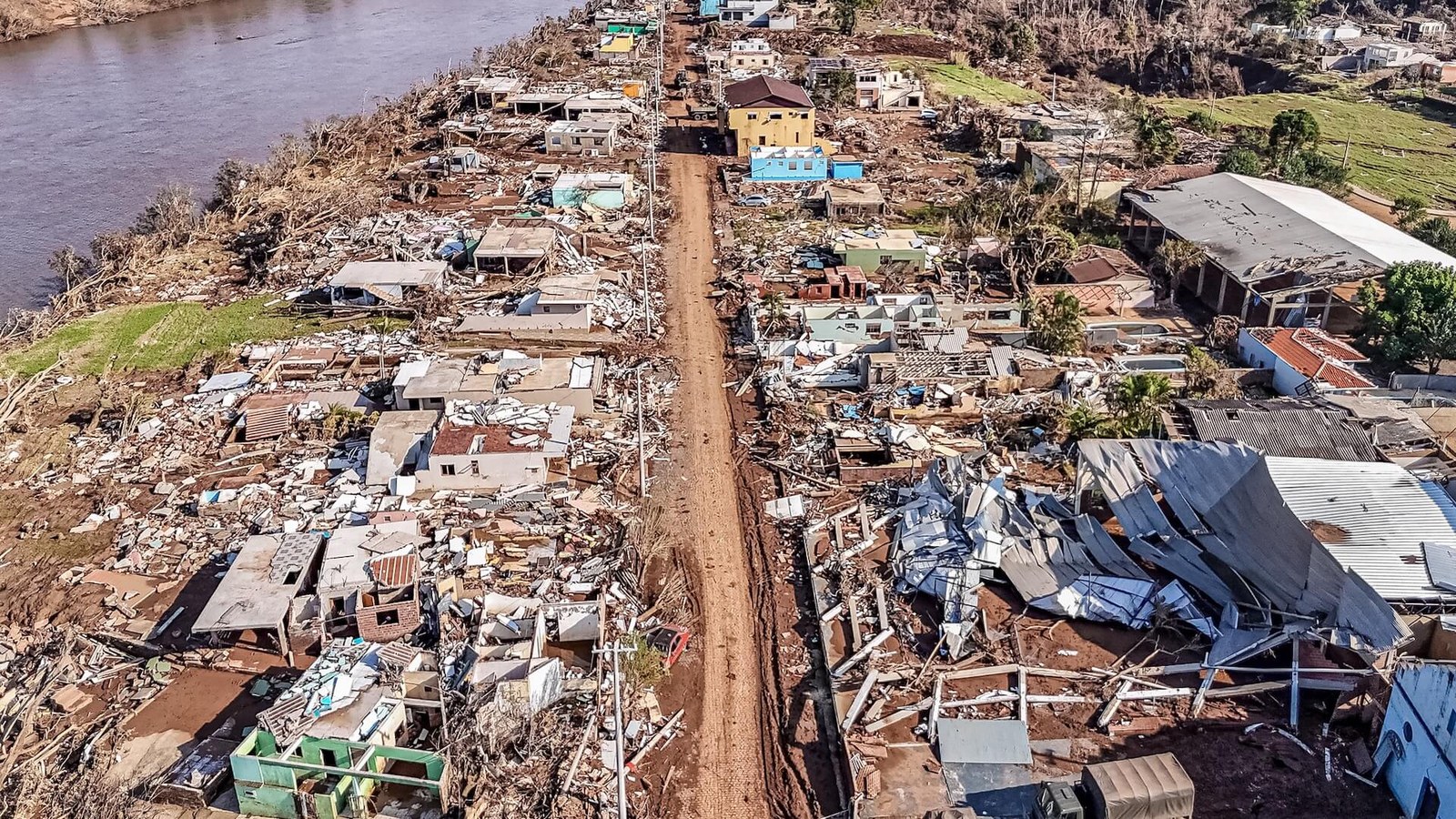
By Leandro Molina / leandro.molina@presidencia.gov.br
A year ago, Rio Grande do Sul endured days that would forever alter its history. The rains that began in late April 2024 escalated within days into the state’s worst recorded weather disaster. After eight days of storms, the devastation was staggering: entire towns submerged, roads transformed into rivers, communities isolated, and a rising death toll with each update from the Armed Forces and Civil Defense (Forças Armadas e Defesa Civil).
According to the data, human influence has increased the intensity of rainfall by 15% compared to its natural potential. Global warming has been identified as the main cause of this phenomenon.
Twelve months later, as families rebuild, experts warn the disaster was no isolated event. The flooding in southern Brasil was a stark portrait of the planet’s climate emergency—and a dire warning of what lies ahead without immediate action.
On April 27, the first showers arrived, but May brought chaos and the situation got completely out of control. As the basins are interconnected, the excess water in several rivers and tributaries flowed into Lake Guaíba - in Porto Alegre. In the capital of Rio Grande do Sul, the Guaíba reached 5.37 meters, flooding entire neighborhoods, surpassing the historic mark of 4.75 meters recorded in the flood of 1941.
The flood inundated several cities in the metropolitan region of Porto Alegre, such as Eldorado do Sul, Canoas, Nova Santa Rita and São Leopoldo, where the waters rose rapidly, flooding streets and houses. Images of families being rescued from rooftops by helicopters and boats from the Armed Forces and Civil Defense, and soldiers of National Force (Força Nacional) went viral on social media.
In the Taquari Valley, one of the most affected areas by the flood, the river that gives its name to the region reached a height of 30 meters with alarming speed, swallowing up and sweeping away towns in a few minutes. The figures reveal the scale of the tragedy: 184 dead, 25 missing, 478 municipalities affected, approximately 2,400 houses destroyed, more than 81,000 homeless, and around 2.3 million people affected directly or indirectly by the floods, according to data from the state's Civil Defense(Defesa Civil do Estado).
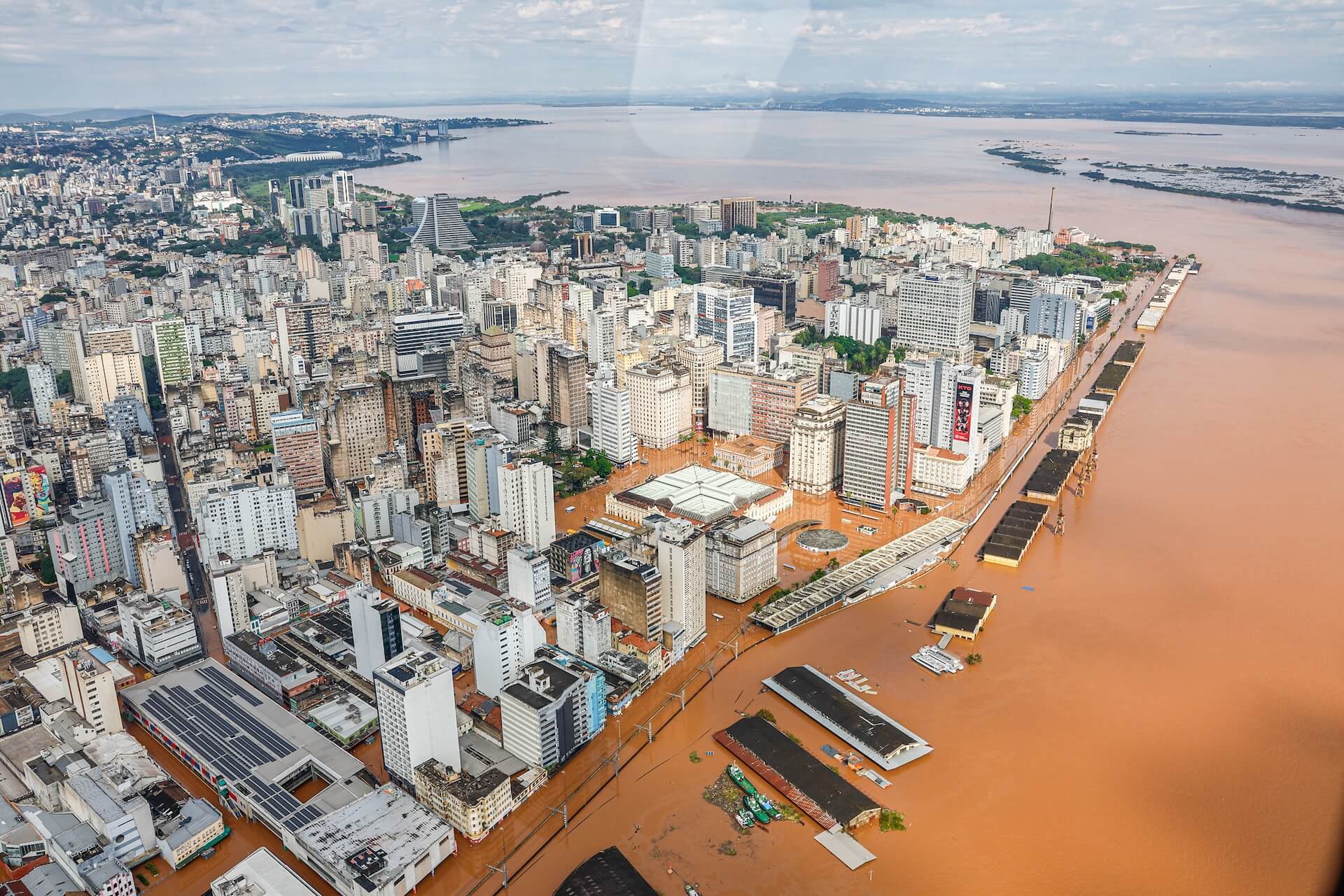
To understand how a storm turned into a disaster, you have to look at a dangerous combination of natural and human factors. From a meteorological point of view, experts explain that the state was subjected to a phenomenon called "flying rivers", which are moisture-laden air currents that come from the Amazônia and dump concentrated rain on certain regions.
"We can no longer treat the climate crisis as a problem of the future. The future has arrived, and it is soaked in blood and tears in Rio Grande do Sul," he declares.
It is common for these air masses to dissipate, but in May last year, a rare combination of factors caused them to remain parked over Rio Grande do Sul. A high-pressure system in the southeast of Brasil and a cold front in the south created a kind of corridor that channeled all this moisture into Rio Grande do Sul territory.
Climatologist Francisco Aquino, from the Federal University of Rio Grande do Sul (Universidade Federal do Rio Grande do Sul/UFRGS), has no doubts: "This was the biggest flood disaster in Brasil's history, and it is directly linked to climate change". He explains that warmer oceans, which are a consequence of global warming, have altered air circulation patterns, creating ideal conditions for extreme events. "It rained in four days the equivalent of a third of the state's annual rainfall. This is not normal, it is a clear sign of the climate crisis we are experiencing," he warns.
Aquino quotes research by ClimaMeter - an experimental platform developed by the team from the climate and environmental science laboratory at the University of Paris-Saclay, France, based on the analysis of meteorological information from the last four decades. According to the data, human influence has increased the intensity of rainfall by 15% compared to its natural potential. Global warming has been identified as the main cause of this phenomenon.
Tragedy and resistance in Canoas
Roseli Pereira Dias, project advisor for Brazilian Cáritas in Rio Grande do Sul — an organization of the National Confederation of Bishops of Brasil (Confederação Nacional de Bispos do Brasil/CNBB), never imagined that the humanitarian work she was doing to help flood victims in the Taquari Valley would become her reality. In May 2024, the rains that devastated Rio Grande do Sul invaded his home in the Rio Branco neighborhood of Canoas, leaving deep scars — both physical and emotional.
On May 2, while organizing food parcels to help homeless people in the cities of Taquari Valley, Roseli and her colleagues stopped work because of the heavy rain. When she returned home, she saw the streets of her neighborhood flooded. According to her, the official warnings were late. "It was not until the early hours of May 4 that loudspeakers announced the evacuation, hours after the surrounding neighborhoods had already been submerged. The information from the town hall was that the containment dyke would protect us. Many people believed it and did not get out in time," she recalls.
With the water rising rapidly, Roseli and her husband improvised: they packed clothes in garbage bags, filled up their car in long queues, and left the house with their two dogs. She says that if they had waited any longer, they would not have left by boat until the next day. Her house, where she grew up and lived for decades, was flooded for 33 days, with water reaching almost 2 meters.
When they returned, they found not only mud but contamination by industrial oil from the barrels of a nearby recycling plant, which had spread throughout the neighborhood. Furniture, photos, and books became mountains of rubble in Eduardo Gomes Park — which became a deposit of destroyed memories.
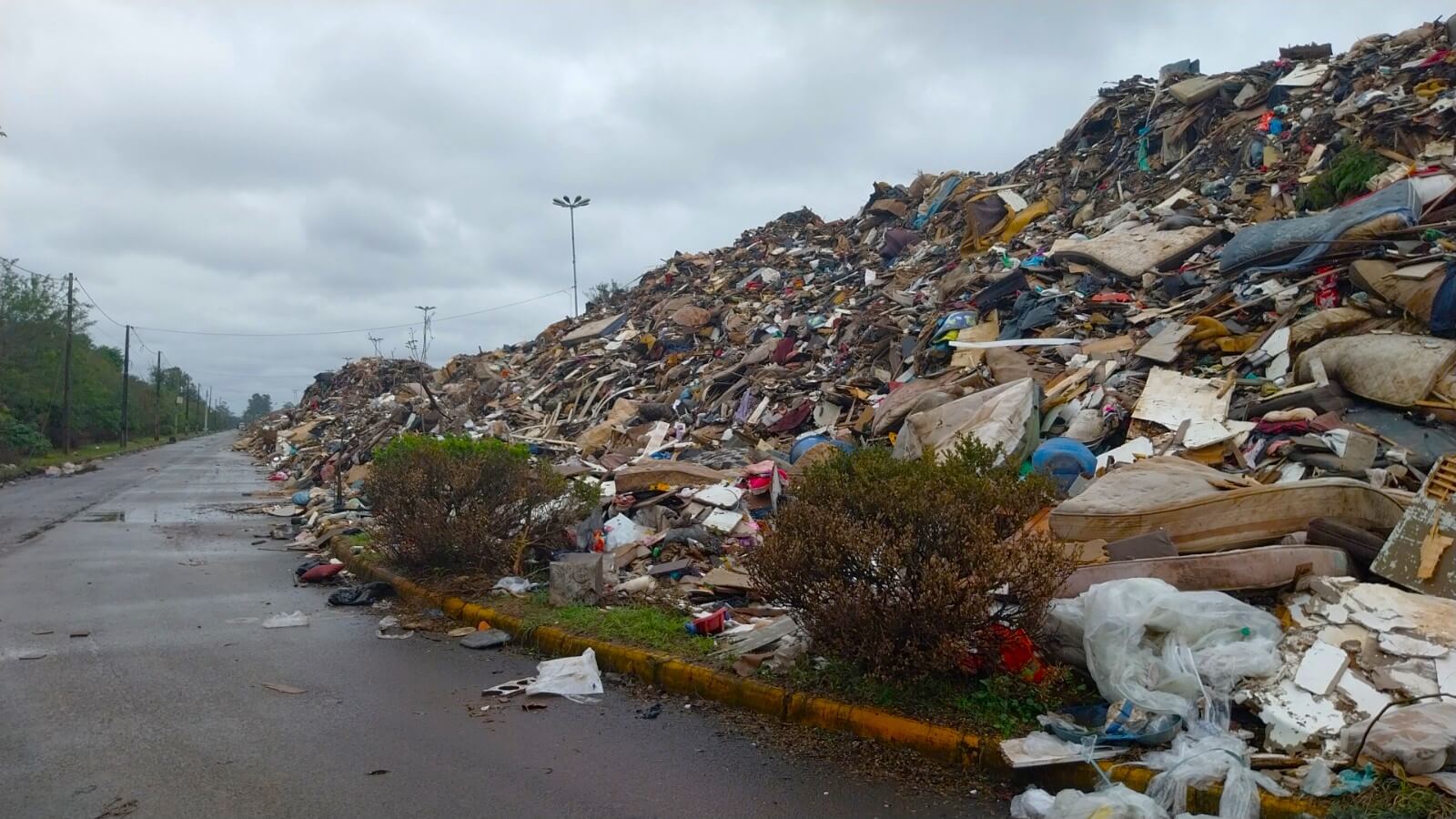
Despite being homeless, Roseli has immersed herself in her work and helped coordinate donations from Cáritas, such as 30,000 blankets —and water for 5,000 families. She also mobilized the reconstruction of 40 houses in communities in need. Gradually, she rebuilt her life. “We only have the essentials at home, for fear of losing everything again,” she says. Neighbors have lost family members to post-flood stress, like a man who died after working day and night to rebuild his house. "Our neighborhood still looks like a war zone. Many houses are still empty," says Roseli.
A year later, the psychological trauma persists, especially among children and the elderly who lived through the most critical moments of the disaster. In the psychological support networks set up after the floods, reports of recurring nightmares and anxiety attacks during storms are common.
The study shows that 35% to 40% of those affected in the metropolitan region were in areas with inadequate protection systems, exacerbating the damage. Climate change has doubled the likelihood of heavy rainfall, with El Niño exacerbating the scenario. Projections indicate that extreme flooding could become five times more frequent in the South.
On May 3, marking one year since the disaster, Roseli and residents of six neighborhoods in Canoas will hold an event in Eduardo Gomes Park, where piles of rubble symbolize their losses. They will distribute tree seedlings that represent resistance to the climate crisis and read a letter demanding effective action from governments. "The flood was no accident. It is the result of climate change and neglect. We want our city to look forward, but without forgetting what happened to us," she stressed.
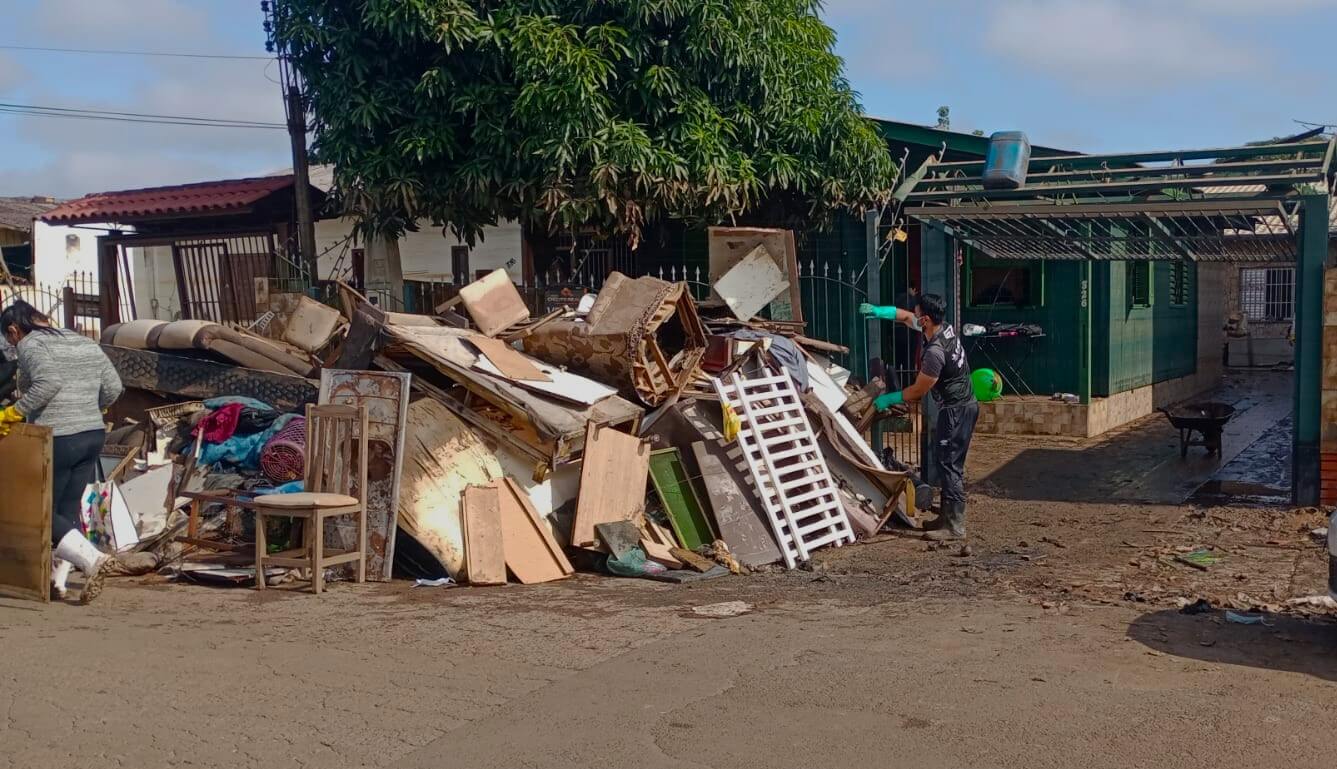
Reconstruction requires urgent adaptation
Marcelo Dutra da Silva, Professor of Ecology at the Federal University of Rio Grande (Universidade Federal do Rio Grande do Sul/FURG), stresses that the torrential rains of May 2024, caused by extreme El Niño manifestations, contributed to the trail of destruction. For the professor, who specializes in ecology and climate change, the disaster did not come as a surprise. He notes that the result of decades of land management mistakes, combined with the global climate emergency, was predictable.
Dutra draws a stark picture: while the state's public authorities were relaxing environmental laws and urban occupation was advancing over risk areas, science was already warning of the effects of a planet 1.4°C warmer. "We built on floodplains, deforested springs and treated urban drainage as the ugly duckling of sanitation. The bill arrived, and El Niño created a fatal combination that dumped historic rainfall on RS. It was like squeezing a giant sponge over the state," he compared.
The expert points out that the magnitude of the disaster was amplified by human negligence. Cities like Pelotas, in the southern part of the state, expanded into wetlands; mountainous communities occupied mountainsides; and Porto Alegre neglected the need to update its flood defenses, such as its dikes, roads, and pumping stations. "The Mauá wall, built in the 1970s, was made for the climate of the 20th century," he notes.
If water was the enemy in 2024, in 2025 it will be the lack of it. The typical La Niña phenomenon, which began this year, brings a long-lasting drought to the state. "In the last 25 years, the area affected by drought has only increased, as have the losses in agriculture. The professor criticizes the lack of action after previous disasters: "We have lost BRL 30 billion in agriculture due to drought between 2018 and 2022," he explains.
According to the ecologist, the survival period after 2024 is a crossroads. "There is no point in rebuilding bridges and houses in the same places. We need plans that consider climate extremes as the rule, not the exception. He mentions three priorities: risk zoning, prohibiting protection in vulnerable areas; adapted infrastructure: urban drainage that can withstand torrential rains; and integration of knowledge: merging universities, businesses, and governments in solutions.
For the ecologist, "denying the climate crisis is like digging our own grave. He warns that the tragedy of 2024 will not be the last. For Dutra, the lesson is clear: "In the new normal climate, adaptation is no longer a political choice; it is the only way to survive." He argues that COP30, which will be held in Belém do Pará, must be a milestone in the effort to tackle climate change. "We can no longer treat the climate crisis as a problem of the future. The future has arrived, and it is soaked in blood and tears in Rio Grande do Sul," he declares.
We need to build differently
Engineers and urban planners argue that, in addition to rebuilding what has been destroyed, we need to create a new model of urban development that takes into account the climate realities of the 21st century. This means offsetting the occupation of land, creating more efficient drainage systems and, above all, respecting the limits of nature, because tragedies like the one in the South will become more frequent - and intense.
In recent decades, the uncontrolled growth of cities in Rio Grande do Sul has occupied areas that should serve as natural floodplains for rivers. In Porto Alegre, entire neighborhoods have been built on floodplains. In the interior, the expansion of monocultures has eliminated the riparian forests that helped control flooding. Geologist Rualdo Menegat of the UFRGS is emphatic: "We have destroyed the natural systems that protect us. We deforested hillsides, filled in wetlands, and now we are suffering the consequences of this irresponsibility."
Menegat says the effects of the disaster are still being felt a year later. In many cities, evidence of the flooding can still be observed on the walls of buildings, where dark stains can be seen as far as the water has risen. In rural areas, farmers are still trying to reclaim land devastated by the force of the water.
The geologist also stresses that public health suffered a major setback. In the months following the floods, there was a significant increase in cases of leptospirosis, hepatitis A, and dermatological diseases caused by contact with contaminated water. Now, with the arrival of summer, the state is facing its worst dengue epidemic as the floods create thousands of ideal breeding grounds for the Aedes aegypti mosquito.
Rualdo Menegat reveals that the tragedy in Rio Grande do Sul has reached international dimensions, becoming a case study on the real effects of climate change. For many experts like him, what happened in Rio Grande do Sul is a warning of what could happen in other regions of the planet if urgent action is not taken. In this context, he says, COP30 —the UN Conference on Climate Change — takes on even greater importance.
"The choice of the Amazônia as the venue for the event is no coincidence. The forest, which covers a large part of northern Brasil, plays a key role in the global climate balance. It is the source of the so-called "flying rivers" - the masses of moist air that regulate the climate in much of South America. Deforestation in the Amazônia may be behind both the extreme droughts in the central west and the torrential rains in the south," he explains.
The entrepreneur from Encantado reports losses of BRL 2 million after flooding
Kelvin Simonis, owner of a sawmill in the industrial zone of Encantado, in the Taquari Valley, never imagined that he would see his company under two meters of water. The record floods of September 2023 and May 2024 destroyed machinery, inventory, and part of the company's infrastructure, causing losses estimated at BRL 2 million.
He says the water arrived quickly. In a few hours, the sawmill — built less than two years ago in an area considered safe — was taken over by the flood. "We lost machines, electrical equipment, and inventory. We were without communication, power, and access to drinking water for days," says Kelvin. While his home, which was on higher ground, escaped without damage, the enterprise was disabled. "We looked out the window, and all we could see was a sea of it. There was nothing to do but wait. Unable to work, expenses piled up, including employee salaries, utility bills, and equipment repairs. At first, we didn't know what to do," he recalled.
Help came in the way of an emergency credit line from the Brazilian government, which he says was essential to rebuilding the business. "Without that support, things would have been much worse. Gradually, the sawmill resumed operations, but on a reduced scale." Kelvin highlights another critical problem: the exodus of workers from the region. "Many people lost everything and left. Today, companies in Encantado, Roca Sales, and Arroio do Meio find it difficult to hire." He also warns of the need to plan for future floods. "These floods are no longer isolated events. We need more efficient warnings and public policies to prevent stories like ours from happening again. Those who stayed cannot give up. But there is an urgent need for the government and society to prepare, because the climate has changed, and next time we will have no warning," he reflects.
Government of Brasil: Immediate Disaster Response Protects Lives and Accelerates Economic Recovery
The government's immediate response to historic flooding in Rio Grande do Sul avoided a humanitarian crisis and ensured the recovery of the state's economy. The case highlights the importance of government responsiveness in climate emergencies. The damage required an urgent response.
The federal government acted quickly, allocating BRL 111.7 billion to rebuild the state, with 80% of the funds, BRL 89 billion, to be executed in 2024. The result went beyond humanitarian aid. Rio Grande do Sul's GDP grew 4.9% last year, outpacing the national average of 3.4%, an example of how speed in crisis management prevents collapse and creates resilience.
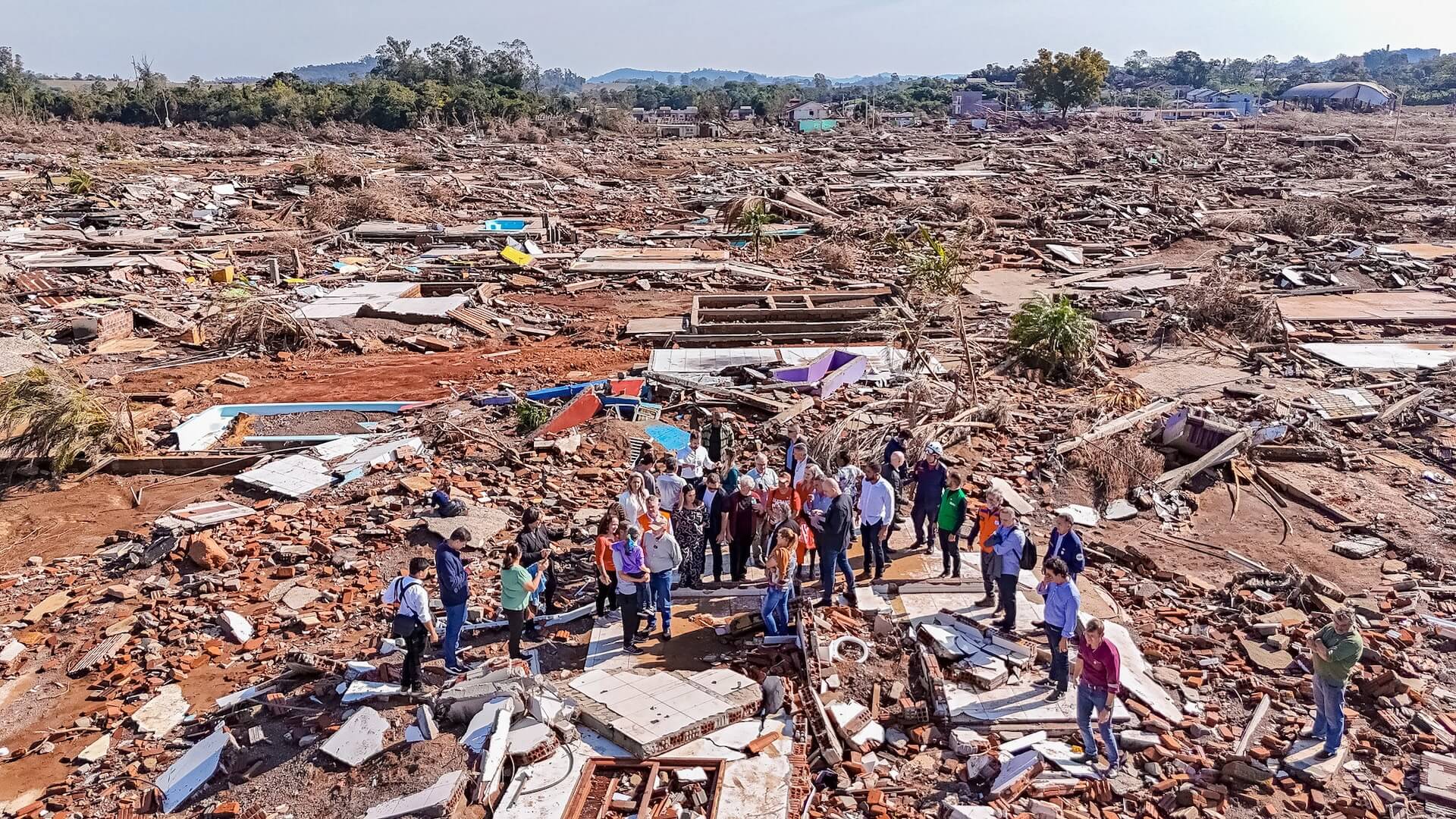
After the disaster, President Luiz Inácio Lula da Silva, in attendance of the presidents of the Senate, the Chamber of Deputies, and the Supreme Federal Court, visited the affected areas, representing the coordination between the branches of government. Immediate emergency measures were announced, such as the suspension of public debt for 36 months, releasing BRL 14.4 billion for investment; reconstruction aid of BRL 5,100 for more than 420,000 families; advance payments of benefits such as the Severance Indemnity Fund (Fundo de Garantia por Tempo de Serviço/FGTS) and Income Tax (Imposto de Renda/IR), injecting BRL 12.6 billion into the local economy.
While the Civil Defense and the Armed Forces rescued 80,000 people and 15,000 animals, the government allocated BRL 4.27 billion to rebuild highways and airports, in addition to BRL 6.9 billion for preventive works such as dikes and pumping stations. In the housing sector, 1,850 homes were delivered and 24,800 new units were started.
Study on floods in RS warns of climate change
The combination of humanitarian aid, such as the distribution of 95,000 tons of basic food baskets, economic incentives in the form of BRL 50.5 billion in loans to enterprises, and long-term planning was crucial. According to experts, the model adopted should serve as a reference in a country increasingly affected by extreme weather events.
The National Water and Sanitation Agency (Agência Nacional de Águas/ ANA) published the report known as "Floods in the state of Rio Grande do Sul - Lessons, challenges, and paths to a resilient future"(As Enchentes no Rio Grande do Sul – Lições, Desafios e Caminhos para um Futuro Resiliente), which includes an analysis of the state's largest natural disaster in 2024. The study shows that 35% to 40% of those affected in the metropolitan region were in areas with inadequate protection systems, exacerbating the damage. Climate change has doubled the likelihood of heavy rainfall, with El Niño exacerbating the scenario. Projections indicate that extreme flooding could become five times more frequent in the South.
As solutions, the report proposes revising infrastructure standards, combining structural and non-structural measures such as resettlement and green infrastructure, and strengthening monitoring and warning. The study was prepared by members of the Technical Advisory Group for Hydrological Studies and Infrastructure Safety for Reserves and Flood Protection in the State of Rio Grande do Sul (Grupo Técnico de Assessoramento para Estudos Hidrológicos e de Segurança de Infraestruturas de Reservação e de Proteção das Cheias no Estado do Rio Grande do Sul/GTA RS), coordinated by ANA.
Climate disaster in Rio Grande do Sul and COP30
The experts were unanimous: the disaster in Rio Grande do Sul was exacerbated by climate change. Extreme events such as record rainfall and periods of drought in southern Brasil make it clear that the climate crisis is not a distant threat, but an urgent reality. COP30, which will take place in November, will be an important space to discuss global solutions, reinforcing the need for effective adaptation and mitigation policies.
Many cities in Rio Grande do Sul (RS) are still trying to get back on their feet. In addition to the material losses, the trauma remains. Located in a climate transition zone, Rio Grande do Sul is particularly vulnerable. Studies also suggest that events like last year's could become more common if carbon emissions are not reduced and adaptation measures are not put in place.
While RS is still recovering, the world must act. A year has passed since the tragedy, but the lessons still resonate. For the people of Rio Grande do Sul, May 2024 was not just a month of rain and flooding - it was a milestone in the climate crisis that requires immediate global action that the world cannot ignore.
English Version: Trad. Bárbara Menezes
Proofreading by Enrique Villamil
